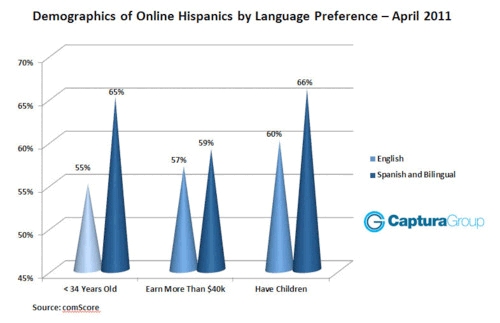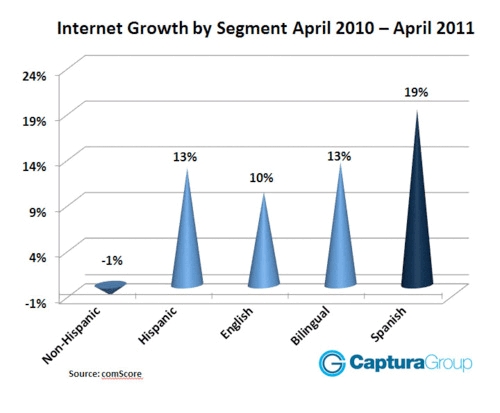- Posted By: Myriam Grajales-Hall
- Written by: Lee Vann - Captura group

When it comes to the Hispanic online market, most studies indicate that half of the 31 million Hispanics online prefer English while the other half prefers Spanish or are bilingual. Using common sense and some quantitative data from comScore, Vann came up with 5 reasons for using Spanish to reach online Hispanics.

2. Less Competition – Today there are relatively few marketers proactively targeting the 14.6 million online Hispanics that prefer Spanish or are bilingual. Less competition means not only lower advertising costs on platforms such as Google and Facebook, but also higher engagement with a consumer that is not as bombarded by online advertising.
3. Favorable Demographics – When compared to English preferring online Hispanics, Hispanics who prefer Spanish or are bilingual fall into a sweet spot for marketers looking to reach consumers who are young, make more money and have a family:
4. Low Expectations – Most Hispanics expect Spanish-language online experiences to be poor. Marketers who provide high quality Spanish language online experiences will exceed expectations and make a favorable impression on this segment.
5. Using English is More Challenging- Targeting English preferring Hispanics online is more difficult and expensive than targeting Spanish speaking online Hispanics. In addition, marketers already investing in general market online campaigns are likely reaching English preferring online Hispanics.
Marketers looking to reach all online Hispanics need to use both English and Spanish. But Vann suggest that if you had to choose between the two, he would start with Spanish.
Source: Captura Group, “Five Reasons for Using Spanish to Reach Hispanics Online,” by Lee Vann, June 9, 2011.



